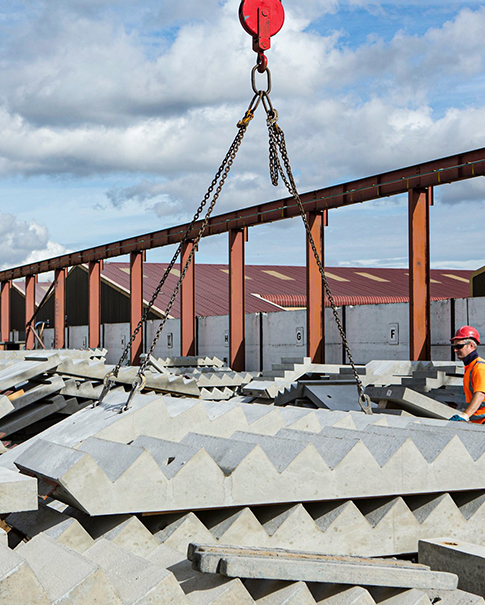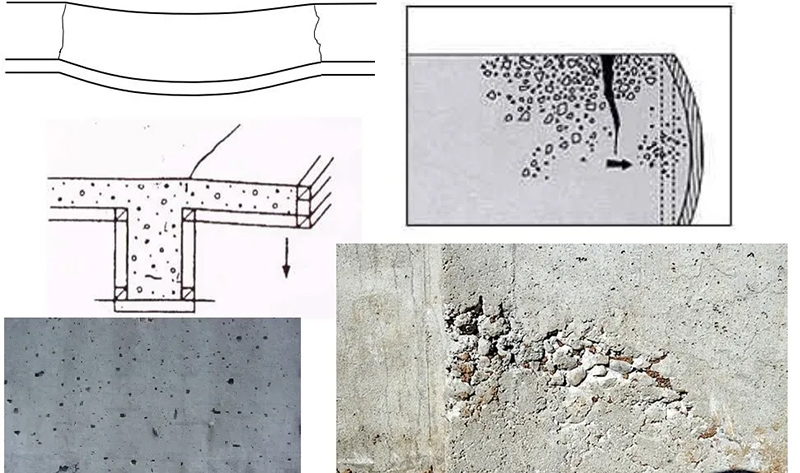-

Email Us
sale@lscmagnetics.com -

Contact Number
+86 -13559234186

Email Us
sale@lscmagnetics.com
Contact Number
+86 -13559234186
With the rapid development of prefabricated buildings, precast concrete components, as a core component, have a quality that directly impacts building safety, lifespan, and aesthetics. However, throughout the production process, from pouring and vibrating to curing and demolding, a variety of quality defects can occur even with the slightest carelessness. According to on-site statistics, over 60% of components exhibit varying degrees of cosmetic or structural damage during the demolding stage. These defects not only affect the appearance but may also pose structural risks. This article systematically analyzes typical quality issues in precast component production and provides practical prevention and control strategies.

An In-Depth Analysis of Core Quality Defect Types and Causes
1. Cracks: From Surface Marks to Structural Threats.
Cracks are one of the most common and dangerous defects and can be categorized by depth:
- Surface Cracks: Mostly caused by improper maintenance
- Deep Cracks: Often caused by premature formwork removal or external impact
- Through-Cracks: Mostly caused by design flaws (such as excessively long or insufficiently thick components) or uneven mortar application
In autumn and winter, when the temperature difference between day and night exceeds 10°C, the incidence of transverse through-cracks in composite slabs due to shrinkage stress increases by 40%. While these cracks may not immediately affect the structure, they can accelerate steel corrosion and significantly reduce durability.
2. Roughing and Honeycombing: A Dual Challenge to Surface Integrity
- Roughing: Appears as dense, pitted spots ≤5mm in diameter, primarily caused by debris adhering to the formwork, uneven application of release agent, or localized vibration failure leading to trapped air bubbles. - Honeycomb: Cavities larger than 5mm in diameter revealing stone. The underlying cause is concrete segregation (separation of mortar and stone) or vibration failure, particularly in areas of dense rebar or at formwork joints.
Although roughness has a minimal impact on structural strength, it can directly lead to component degradation or even scrapping in projects requiring high finishes, such as bare concrete.
3. Holes and Exposed Rebar: A Fatal Blow to Structural Strength
- Holes: Cavities deeper than the cover thickness, often occurring in prestressed rebar passages or areas of dense rebar. The main causes are interruptions in concrete feed, segregation blockage, or vibration failure.
- Exposed Rebar: Direct exposure of rebar, often caused by displacement of cover spacers, overcrowding of rebar, or premature formwork removal, leading to damaged edges and corners.
4. Air Bubbles and Root Rot: Typical Signs of Process Out-of-Control
- Sheet Air Bubbles: Clumping bubbles form on the surface after demolding. This is directly related to low sand content, improper release agent selection, or incorrect vibration parameters. - Root rot: Loss of grout at the bottom edge of a component creates a loose band, primarily due to formwork seal failure or concrete bleeding.
Areas of dense bubbles are often accompanied by a decrease in surface hardness, making them more susceptible to spalling in freeze-thaw conditions.
5. Chipped edges and corners: A weak link in the handling chain
Component corners are damaged or missing, primarily during formwork removal and lifting:
- Insufficient formwork strength (less than 70% of the design value)
- Collision with lifting equipment
- Failure to protect corners during stacking
Especially in thin-walled components such as stair treads, the chipping rate can reach over 15%, significantly increasing repair costs.
The quality defects of prefabricated components act like a mirror, reflecting both the scientific nature of the material mix and the rigorous execution of the process. From the application of a release agent to the temperature control curve during steam curing, every detail plays a role in determining the lifespan of the component.
Comparison of Common Defect Repair Materials and Methods
| Defect Type | Applicable materials | Key processes | Maintenance requirements |
| Cracks <0.2mm | Epoxy base liquid + glass cloth | Expand the crack by 15-20cm on both sides with brushing. Clean the base surface with acetone. | Shade curing for 72 hours |
| Cracks >0.2mm | Epoxy mortar/chloride mortar | Cut a trapezoidal groove to the depth of the rebar. | Wet curing for ≥14 days |
| Roughness | 1:2 cement mortar + white cement coloring | Apply putty-like pressure. | Moisture-proofing with film for 48 hours |
| Hole | Higher grade fine aggregate concrete | Soak the base in water for 72 hours and add 0.1‰ aluminum powder expansion agent. | Formwork top pressure curing for 7 days |
| Cut edges and corners | Same grade concrete + interface agent | Roughen the base surface and cast the concrete using formwork. | Watering curing for 7 days |
| Innovative repair solution: For areas with dense bubbles, styrene-butadiene emulsion cement mortar can be used. Its bonding strength is 50% higher than that of traditional mortar, and the color difference is smaller. | |||